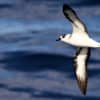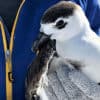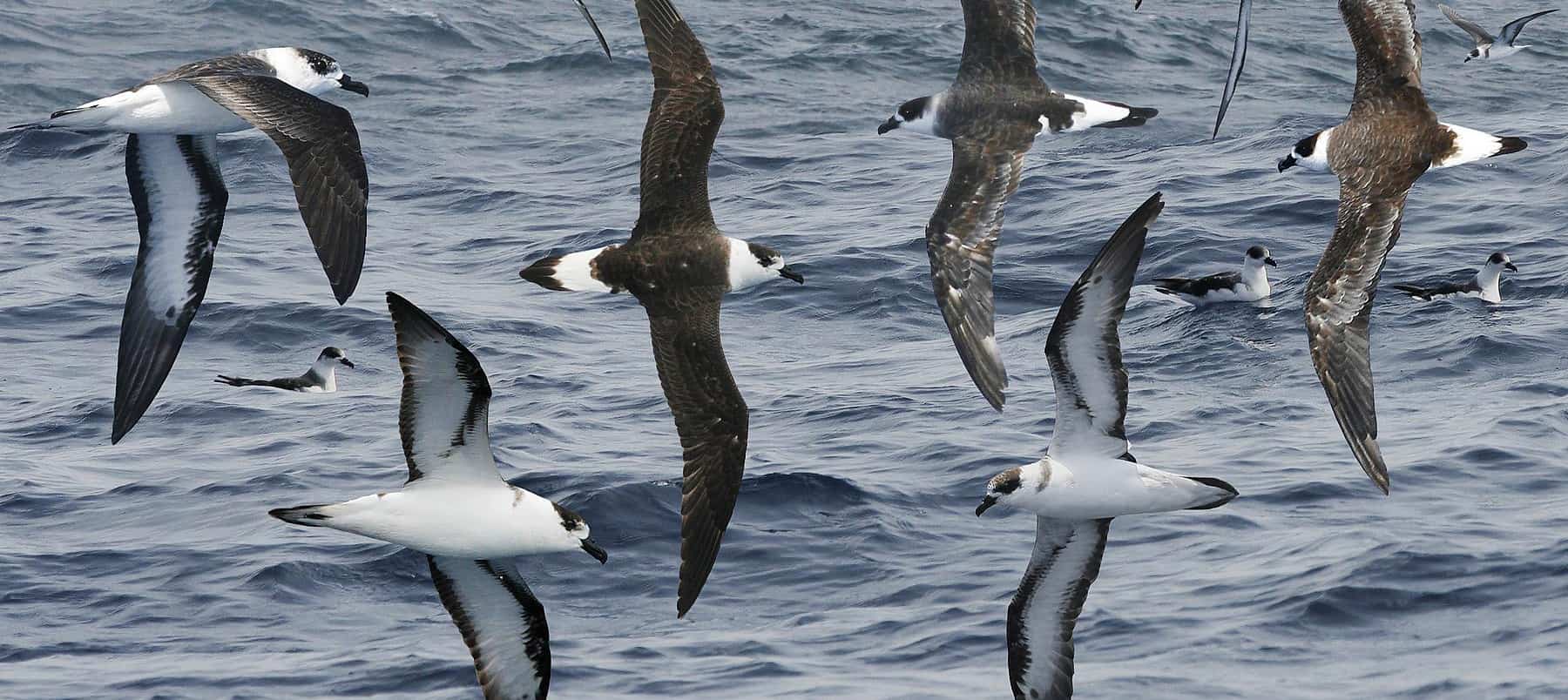Share this article
Conservationists capture rare, elusive seabirds for tracking
Brad Keitt woke up early enough to make it to the dock by 5 a.m., to get everything loaded onto the research vessel by first light. The sport fishing boats would be heading out then from the harbor at Cape Hatteras, North Carolina. His crew planned to follow these vessels closely to find a safe path through the shallow sandbar, then head off on their own in search of elusive black-capped petrels, which spend their summers foraging and floating in the Gulf Stream, 30 miles off the coast.
“It was a great way to spend my birthday,” said Keitt, the program director of the American Bird Conservancy’s Ocean and Islands program.
While researchers knew a fair amount about the black-capped petrels (Pterodroma hasitata) with darker faces, little is known about a white-faced morph that researchers believe may represent a genetically distinct subspecies. All black-capped petrels are declining in numbers, but these white-faced birds, whose black-cap does not extend fully below the eye and are rarer than the dark-faced birds, may use different breeding grounds than the known sites in the Dominican Republic and Haiti, making it difficult for conservationists to identify the threats they may face.

A white-faced morph of a black-capped petrel flies at the edge of the continental shelf, 30 miles off Cape Hatteras. ©Daniel Lebbin
The Gulf Stream off Cape Hatteras is a well-known hot spot for black-capped petrels, thanks mostly to trips led by Brian Patteson aboard the boat dubbed Stormy Petrel II — the only reliable commercial trip in the US to spot these rare birds. So when Keitt and his colleagues wanted to capture some individuals at sea and tag them with satellite devices to see where they go, they teamed up with Patteson. Armed with a net launcher, Keitt and Chris Gaskin, an experienced bird capturer who became skilled at snagging seabirds for research in the open sea off New Zealand, set out from the research vessel in a rubber 10-foot dinghy on a mission for science.
Once in the small inflatable, the adventures were just getting started. The crew on the research vessel poured fish oil into the water to create a slick and deployed a buoy connected to a cage full of frozen fish bits, which would generate a pungent aroma to attract the petrels’ sensitive noses. Keitt coaxed the dinghy to stay in place, battling rough waves and wind to keep the small vessel pointed downwind toward the buoy, while Gaskin manned the net launcher in what Keitt described as being “like trying to steer a Radio Flyer red wagon on ice wearing roller skates.”
Both kept an eye on the sky in hopes of seeing a white-faced morph swoop close enough to their boat to get a good chance of capturing it with the net launcher.
“You’re kind of disappearing between swells, losing sight of the birds,” Keitt said. As more birds picked up the scent and began swooping around them toward the buoy, he and Gaskin shouted back and forth over the sound of the waves and boat engine in an effort to focus their attention on the white-faced morphs they wanted rather than the more common dark-faced petrels.
The first few they captured ended up being dark-faced morphs. It was the first time black-capped petrels had ever been captured at sea, Keitt said, but they were not the birds the two were trying capture. It was difficult to tell which type they were netting, though. Only one out of every 10 petrels in the area was a white-faced morph, and there were occasionally several birds around at once, making it hard to pinpoint the right target.

This black-capped petrel, captured and released with a satellite tag, is a white-faced morph. Scientists hope that by tracking these rare, poorly known birds, they will locate new nesting areas they can target for conservation. ©Daniel Lebbin
“You’re really looking at some fine details at how extensive the white is around the eye,” Keitt said of the black-capped petrels, which in some of their Caribbean breeding grounds are called diablotín or little devil. “You often can’t tell until they’ve flown past you.”
The team fitted these first birds with tracking devices to provide a comparison with any white-faced morphs, which they eventually were lucky enough to catch.
The net launcher is an air-powered unit that shoots a PVC-lined web that envelopes the bird and floats on the surface where the researchers can pick it up again. The birds had to come within 10 to 20 feet of the launcher if they hoped to catch one, Keitt said, and they only had about 40% to 50% success with their shots. Once bagged, they would quickly take the petrel to the research vessel, where other technicians took morphological measurements, assessed the birds’ health and fitted them with satellite tracking devices.
Keitt hopes the 10 birds they tagged, which can be followed online in real time at the Atlantic Seabirds website, will eventually lead the researchers back to find nesting areas.
The white-faced morphs become less common in the Gulf Stream later in the summer, and these birds tend to be heavier, with more molt. Some evidence has shown that black-capped petrels may be breeding in Jamaica, Cuba and Dominica, but biologists have struggled to locate them. All those discovered in the Dominican Republic or Haiti are dark-faced morphs, with only a couple of partly dark intermediate birds.
“The theory is that the white-faced morphs spend the early part of the season off the east coast of the U.S. and then go to these other islands like Dominica and breed earlier,” Keitt said.
Discovering where the birds go during their breeding periods will help the researchers identify the risks they face on their breeding grounds, which in some areas of the Dominican Republic include predation from invasive species like mongoose, cats and rats and habitat loss. “The hope for us is that this can lead to new nesting sites and lead to conservation action,” Keitt said. “Really this was just the first step because we didn’t know if this was possible.”
Header Image: Researchers managed to catch black-capped petrels, like those shown in this composite image from The Crossley ID Guides: Eastern Birds for the first time at sea. ©The Crossley ID Guide: Eastern Birds








